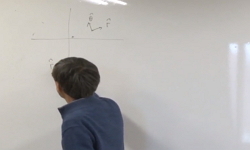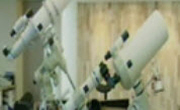As the subtitle of this paper, ‘the first step in the process of the investigation into the method to mark an era in the way of Tiantili(天體曆)'s book calendar’, shows, this study aims at examining the discussion among predecessors, particular...
http://chineseinput.net/에서 pinyin(병음)방식으로 중국어를 변환할 수 있습니다.
변환된 중국어를 복사하여 사용하시면 됩니다.
- 中文 을 입력하시려면 zhongwen을 입력하시고 space를누르시면됩니다.
- 北京 을 입력하시려면 beijing을 입력하시고 space를 누르시면 됩니다.

『정몽』 「삼양」편에 보이는 장재의 천지관 및 천체운행 논의의 이해와 그에 대한 왕부지의 해석 - 천체력 기년원리 궁구 과정의 첫 번째 발걸음【2/3】 - = The Understanding of Zhang Zai(張載)'s Viewpoint of the Sky and the Earth(天地觀) and the Discussion on the Movements of Celestial Bodies(天體運行) in Chapter “Can liang”(「參兩」) of Zhèng meng(『正蒙』) and Wáng Fu Zhi(王夫之)'s Interpretation - The First Step to Investigate the Tiantilì(天體曆) Year-Marking Principle【2/3】 -
한글로보기https://www.riss.kr/link?id=A106264055
- 저자
- 발행기관
- 학술지명
- 권호사항
-
발행연도
2019
-
작성언어
-
-
주제어
삼양 ; 參兩 ; 정몽 ; 장재 ; 왕부지 ; 칠요 ; 천체 ; Can liang ; Zheng meng ; 正蒙 ; Zhang Zai ; 張載 ; Wang Fu Zhi ; 王夫之 ; Seven Planets ; 七曜 ; Astral Body
-
KDC
100
-
등재정보
KCI등재
-
자료형태
학술저널
-
수록면
287-319(33쪽)
-
KCI 피인용횟수
1
- DOI식별코드
- 제공처
- 소장기관
-
0
상세조회 -
0
다운로드
부가정보
다국어 초록 (Multilingual Abstract)
The key of what Zhang Zai(張載) argued through the discussion of the structure of the sky and the earth and celestial bodies' movements in chapter “Can liang(參兩)” of Zheng meng(『正蒙』) was that ‘the sun, the moon, and the five planets followed well the route on which celestial bodies rotated as if they were obedient even though they were slower than the sky(天)’. He attached a fixed star to the sky, the sun, the moon and the five planets to the earth. Moreover, he set the being called ‘qi’(氣: the power as the origin in the formation of all creatures in the Oriental philosophy) between ‘the sky(天)’ that rotated in the same speed without a change from the east to the west and ‘the earth(地)’ without a rotational movement. In addition, the ‘qi’(氣) rotates from the east to the west like the sky as if it obeys the movement of the sky. Through this concept, he tried to explain the reason why the sun, the moon and the five planets couldn't move completely identically as fixed stars did. Meanwhile, it has been also verified that in this part, Wang Fu Zhi(王夫之) made a mistaken comment that Zhang Zai(張載) argued the rotation exercise of the earth.
As the subtitle of this paper, ‘the first step in the process of the investigation into the method to mark an era in the way of Tiantili(天體曆)'s book calendar’, shows, this study aims at examining the discussion among predecessors, particularly Zhang Zai(張載)'s viewpoint on the sky and the earth(天地觀) and the discussion on the movements of celestial bodies in depth. It's difficult to find immediate relation between the logical principle to mark an era with Ganzhi(干支) of Tiantili(天體曆) formed around Han Dynasty and Neo-Confucian discussion on the sky(天). Yet, with small hope of finding a little clue in this area with few preceding researches, about Zhang Zai(張載)'s key discussions over the viewpoint of the sky and the earth(天地觀) and the movements of celestial bodies discussed about the way of sky(天道) were examined in this study. In addition, as an explanation about it, Wang Fu Zhi(王夫之)'s Zhang-zi-zheng-meng zhu(『張子正蒙注』 : Wang Fu Zhi(王夫之)'s commentary on Zheng meng(『正蒙』) written by Zhang Zai(張載)) was studied, too.
The key of what Zhang Zai(張載) argued through the discussion of the structure of the sky and the earth and celestial bodies' movements in chapter “Can liang(參兩)” of Zheng meng(『正蒙』) was that ‘the sun, the moon, and the five planets followed well the route on which celestial bodies rotated as if they were obedient even though they were slower than the sky(天)’. He attached a fixed star to the sky, the sun, the moon and the five planets to the earth. Moreover, he set the being called ‘qi’(氣: the power as the origin in the formation of all creatures in the Oriental philosophy) between ‘the sky(天)’ that rotated in the same speed without a change from the east to the west and ‘the earth(地)’ without a rotational movement. In addition, the ‘qi’(氣) rotates from the east to the west like the sky as if it obeys the movement of the sky. Through this concept, he tried to explain the reason why the sun, the moon and the five planets couldn't move completely identically as fixed stars did. Meanwhile, it has been also verified that in this part, Wang Fu Zhi(王夫之) made a mistaken comment that Zhang Zai(張載) argued the rotation exercise of the earth.
참고문헌 (Reference)
1 김인규, "조선후기 實學派의 自然觀 형성에 끼친 漢譯西學書의 영향 空際格致와 談天을 중심으로" 한국사상문화학회 (24) : 259-288, 2004
2 모영환, "장재와 안원을 통해 본 유가 인성론의 전개에 관한 연구" 성균관대학교 대학원 2010
3 "革象新書 (趙友欽/元)"
4 "論語"
5 "論衡 (王充/漢)"
6 "說苑 (劉向/漢)"
7 "蔡中郞集 (蔡邕/漢)"
8 "禮記"
9 "白虎通德論"
10 "物理小識 (方以智/明末)"
1 김인규, "조선후기 實學派의 自然觀 형성에 끼친 漢譯西學書의 영향 空際格致와 談天을 중심으로" 한국사상문화학회 (24) : 259-288, 2004
2 모영환, "장재와 안원을 통해 본 유가 인성론의 전개에 관한 연구" 성균관대학교 대학원 2010
3 "革象新書 (趙友欽/元)"
4 "論語"
5 "論衡 (王充/漢)"
6 "說苑 (劉向/漢)"
7 "蔡中郞集 (蔡邕/漢)"
8 "禮記"
9 "白虎通德論"
10 "物理小識 (方以智/明末)"
11 서정화, "漢代 이전에 형성된 天體曆 紀年 원리 고찰의 필요성에 대한 小論" 동양고전학회 (72) : 365-400, 2018
12 "注解正蒙 (李光地/淸)"
13 "正蒙 (張載/宋)"
14 "朱子語類"
15 "書經集傳 (蔡沈/宋)"
16 "書經"
17 "書傳 (蘇軾/宋)"
18 "易翼述信 (王又僕/淸)"
19 "性理大全書"
20 "律曆融通 (朱載堉/明)"
21 박경환, "張載의 氣論的인성론에 관한 연구-天地之性과 氣質之性개념의 분석을 중심으로" 중국철학회 8 : 2001
22 황종원, "張載의 太虛와 氣개념에 대한 고찰" 한국동서철학회 (23) : 213-, 2002
23 양승무, "張橫渠 “正蒙”의 天道論 연구" 한국유교학회 (21) : 141-190, 2004
24 "張子正蒙注 (王夫之/明末)"
25 "尙書註疏 (孔安國/漢⋅孔穎達/唐)"
26 "尙書廣聽錄 (毛奇齡/淸)"
27 "太平御覽 (李昉/宋)"
28 "唐開元占經"
29 "周易衍義 (胡震/元)"
30 "古微書 (孫瑴/明)"
31 서정화, "古典에 보이는 천체운행 담론 분석을 통한 日月五星의 順天⋅逆天 표현 일고찰 - 天體曆 紀年原理 궁구 과정의 첫 번째 발걸음[1/3] -" 동양고전학회 (74) : 457-489, 2019
32 "厚齋易學 (馮椅/宋)"
33 "六經天文編 (王應麟/宋)"
34 "京氏易傳 (京房/漢)"
35 "五洲衍文長箋散稿 (李圭景)"
36 은석민, "『黃帝內經』과 宣夜說의 관계에 대한 연구" 대한한의학원전학회 22 (22): 15-26, 2009
동일학술지(권/호) 다른 논문
-
- 충남대학교 유학연구소
- 진성수 ( Chin Sung-su )
- 2019
- KCI등재
-
미수(眉叟) 허목(許穆)의 상서관(尙書觀) - 난(亂)에서 치(治)로의 지향 -
- 충남대학교 유학연구소
- 이은호 ( Lee Eun-ho )
- 2019
- KCI등재
-
율곡학파 학자들의 『대학』 공부론 연구 - 부념(浮念)과 편념(偏念)에 관한 호론과 낙론 학자들의 견해를 중심으로 -
- 충남대학교 유학연구소
- 정연수 ( Jung Yeon-soo )
- 2019
- KCI등재
-
한국양명학 연구의 제(諸)문제 - ‘하곡학’에서 ‘한국양명학’으로, 그리고 ‘실학’과 ‘천주교’와의 관계성 및 근대성에 착안하여 -
- 충남대학교 유학연구소
- 김용재 ( Kim Yong-jae )
- 2019
- KCI등재
분석정보
인용정보 인용지수 설명보기
학술지 이력
| 연월일 | 이력구분 | 이력상세 | 등재구분 |
|---|---|---|---|
| 2027 | 평가예정 | 재인증평가 신청대상 (재인증) | |
| 2021-01-01 | 평가 | 등재학술지 유지 (재인증) |  |
| 2018-01-01 | 평가 | 등재학술지 유지 (등재유지) |  |
| 2016-02-12 | 학술지명변경 | 외국어명 : 미등록 -> Studies in Confucianism |  |
| 2015-01-01 | 평가 | 등재학술지 유지 (등재유지) |  |
| 2011-01-01 | 평가 | 등재학술지 선정 (등재후보2차) |  |
| 2010-01-01 | 평가 | 등재후보 1차 PASS (등재후보1차) |  |
| 2008-01-01 | 평가 | 등재후보학술지 선정 (신규평가) |  |
학술지 인용정보
| 기준연도 | WOS-KCI 통합IF(2년) | KCIF(2년) | KCIF(3년) |
|---|---|---|---|
| 2016 | 0.62 | 0.62 | 0.56 |
| KCIF(4년) | KCIF(5년) | 중심성지수(3년) | 즉시성지수 |
| 0.52 | 0.49 | 1.162 | 0.1 |




 KCI
KCI KISS
KISS







